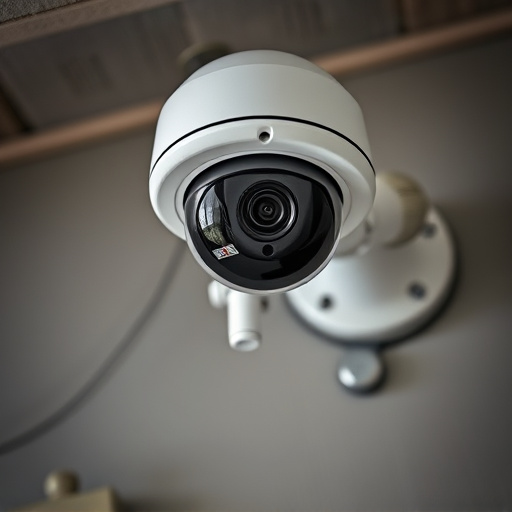The Dummy Camera Bracket Installation Guide details how to install and maintain realistic mock surveillance systems using dummy camera brackets. It emphasizes choosing right hardware, optimal placement considering weight load and environmental factors, precise alignment for deterrence, strategic positioning for visibility, and regular testing and maintenance for accuracy and reliability, ensuring an authentic training environment without actual surveillance costs and risks.
“Uncover the secrets of creating a realistic mock surveillance system with our comprehensive Dummy Camera Bracket Installation Guide. This guide delves into the essential role of dummy camera brackets in enhancing security measures without breaking the bank. Learn how strategic placement is key to effective simulation, offering tips on choosing optimal installation locations. We provide a detailed step-by-step process for installing these versatile brackets, ensuring your system functions seamlessly. Additionally, discover testing and maintenance strategies to keep your mock surveillance system reliable and ready for any scenario.”
- Understanding Dummy Camera Brackets and Their Role in Surveillance
- Choosing the Right Location for Installation: Tips and Best Practices
- Step-by-Step Guide to Installing Dummy Camera Brackets
- Testing and Maintaining Your Mock Surveillance System: Ensuring Effective Simulation
Understanding Dummy Camera Brackets and Their Role in Surveillance
Dummy camera brackets play a crucial role in any mock surveillance system installation guide. They serve as the backbone for mounting and positioning fake cameras, enabling a comprehensive security simulation. These versatile brackets come in various designs, each tailored to fit different camera types and angles. By strategically placing them, you can create a realistic appearance of surveillance, deterring potential intruders while testing real-world security protocols.
Understanding their proper installation is key. The guide should detail step-by-step instructions on how to securely attach the brackets to walls or ceilings, ensuring stability and precision alignment. This involves choosing the right mounting hardware, considering weight load, and accounting for environmental factors like moisture and temperature variations. With accurate bracket placement, your dummy camera system will serve as an effective, yet harmless, deterrent, providing peace of mind without the need for actual surveillance equipment.
Choosing the Right Location for Installation: Tips and Best Practices
When setting up a mock surveillance system, selecting the optimal location for dummy camera brackets is paramount. Start by assessing the area you want to monitor, considering factors such as visibility and potential blind spots. Open spaces with clear lines of sight are ideal, but strategic placement can mitigate obstacles like trees or buildings. Remember, the goal is to mimic real surveillance, so positioning your dummy cameras where a genuine system would be effective is key.
For best practices, consider the height and angle of the brackets. Mounting them at eye level or slightly elevated ensures comprehensive coverage. Ensure they’re angled correctly to capture crucial areas without overlapping fields of view excessively. Moreover, spacing is important; allow enough distance between brackets to avoid any gaps but also prevent excessive overlap that could distort images. Following these tips will ensure your dummy camera bracket installation guide yields a realistic and effective simulation.
Step-by-Step Guide to Installing Dummy Camera Brackets
Setting up dummy camera brackets is a straightforward process, serving as an excellent first step in your mock surveillance system installation. Begin by gathering all necessary components: bracket kits specific to your camera model, screws, and any mounting hardware included. Ensure your workspace is clean and organized for easy access to each part.
Follow these steps:
1. Preparation: Turn off the power to the area where you’ll be installing the brackets. This safety measure ensures no electrical interference during setup.
2. Positioning: Identify the ideal locations for your dummy cameras. Securely attach the brackets to these spots, ensuring they align with your intended camera angles. Use a level to ensure accuracy and stability.
3. Assembly: Follow manufacturer instructions to assemble the brackets onto the mounting hardware. Ensure all parts are securely fastened.
4. Testing: Once installed, double-check the bracket’s stability and adjust as needed. Visualize the final setup to ensure optimal camera placement.
Testing and Maintaining Your Mock Surveillance System: Ensuring Effective Simulation
Testing and maintaining your mock surveillance system is paramount to ensure its effectiveness as a realistic simulation. After installing the dummy camera brackets, it’s crucial to power on the system and verify that all components are functioning properly. Start by checking each dummy camera for clear visuals and accurate image feed, ensuring they mimic real-world cameras accurately. Additionally, test the motion sensors and alerts to confirm they trigger appropriately in response to simulated activities. Regular maintenance involves periodic calibration of sensors and cameras to account for any drifts or changes over time. Calibration ensures consistent performance and accuracy, enhancing the realism of your mock surveillance setup.
Consider establishing a maintenance schedule to keep your system up-to-date. This includes cleaning sensors and lenses to prevent debris buildup, updating firmware as new versions become available, and replacing any faulty components promptly. By implementing these testing and maintenance practices, you’ll have a robust and reliable mock surveillance system that provides an authentic training environment without the costs and risks associated with real surveillance equipment. Remember, adherence to a dummy camera bracket installation guide is essential for achieving optimal results.
Creating an effective mock surveillance system doesn’t have to be complex. By understanding the purpose of dummy camera brackets, strategically selecting installation locations, and following a meticulous installation process, you can simulate a robust security setup. This comprehensive guide, encompassing topics like Dummy Camera Bracket Installation Guide, equips readers with the knowledge to transform their spaces into realistic yet cost-efficient surveillance scenarios. With proper testing and maintenance, your mock system will serve as a reliable tool for training, practice, or creative expression.
